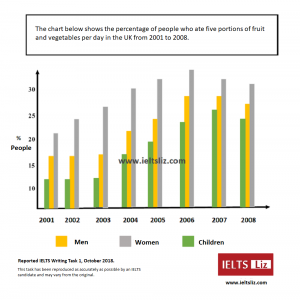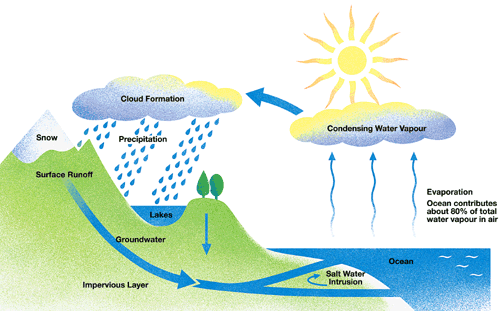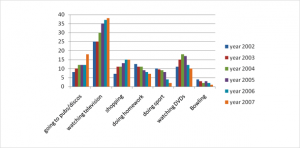Essential vocabulary to describe an IELTS writing task 1 line graph. To get a good band score you must show the examiner a range of different words to show upward and downward trends as well as key features. IELTS line graphs show change over a period of time and you must vary your language and vocabulary when you write your report.
This page contains:
- Verbs & Nouns
- Practice Exercise
- Adverbs & Adjectives
- Time Phrases
- Useful link to model answers and more tips for line graphs
1. IELTS Line Graph Verbs & Nouns
Below are lists of verbs and nouns that can be used to describe a line graph in IELTS writing task 1.
Upward trend
- rise / a rise
- increase / an increase
- climb / a climb
- grow / a growth
- go up
Downward trend
- decrease / a decrease
- drop / a drop
- fall / a fall
- decline / a decline
Other vocabulary
- fluctuate / a fluctuation
- dip / a dip
- remain steady
- remain stable
- remain unchanged
- level off
- peak at
- reach a peak of
- hit a high of
- hit a low of
- bottom out
- plateau
Mistakes when using words will affect your band score. This includes spelling.
- Band 6 = some vocabulary errors.
- Band 7 = few vocabulary errors.
2. Practice with Nouns and Verbs
Fill in the gaps using the vocabulary above. Make sure you adapt the words to make the sentences grammatically correct. The completed paragraph below is an example of a body paragraph for a line graph.

- Source: IELTS Liz
- Notice: It is uncommon to be given only one line as a task unless it is combined with another chart or table. The above graph is for practising vocabulary.
Questions 1-5
Fill in the gaps with the correct vocabulary. You should use no more than two words for each gap.
The number of reported cases of influenza began at 40 in 1985 after which the figure (1). …………………… steadily to reach about 55 in 1987. In 1988, there was a (2) …………. in the number to below 50 before (3) ……………. to reach a (4) ………… (5) ……….. approximately 75 in 1991. After that date, the figure dropped to about 55 in the final year.
Answers
Click below to reveal the answers:
Answers- rose / increased / climbed / grew / went up
- a fall / a decline / a drop / a dip / a decrease
- climbing / increasing / rising / going up / growing
- peak
- of
3. Line Graph Adverbs & Adjectives
Below are useful adverbs and adjectives to describe change.
Adverbs: steadily, gradually, sharply, rapidly, steeply, slightly, dramatically, significantly, considerably
Adjectives: steady, gradual, sharp, rapid, steep, slight, dramatic, significant, considerable
Sentences:
- The number of cases of influenza increased steadily from 40 to 55 in the first three years.
- There was a steady rise in the number of cases of influenza to reach 55 in 1987 from 40 in the first year.
4. Time Expressions
IELTS line graphs show change over a period of time. Below are some expressions to help you describe the passing of time without too much repetition.
Time phrases:
- over the next three days
- three days later
- in the following three days
- the next three days show
- over the period
- from…to… / between … and…
- the last year
- the final year
- the first year
- at the beginning of the period
- at the end of the period
5. Recommended Links for more IELTS Writing Task 1
IELTS Writing Task 1: Tips, Model Answers and More
Full Model Answer and Guidelines for IELTS Line Graph
All other free materials are found on the RED BAR at the top of this site.
All the best
Liz
Subscribe for Free to get New Post by Email




